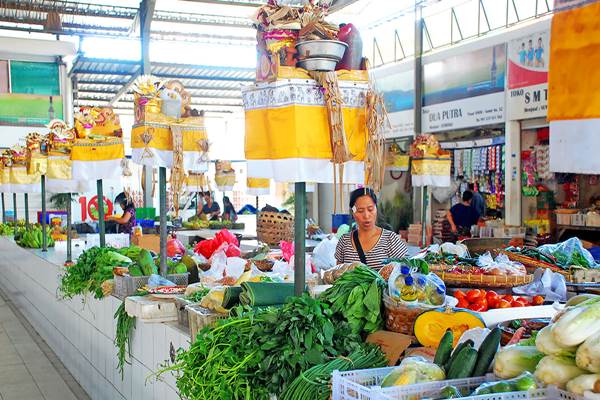The Bali office of Bank Indonesia (BI) has rolled out anticipatory strategies to counter potential inflationary pressures toward the end of 2025. Several risk factors have emerged, including rising demand for goods and services during the upcoming peak tourist season, increasing global gold prices, and higher benchmark prices for crude palm oil (CPO), which could trigger imported inflation.
Adding to the pressure, the soaring price of corn, a key component of animal feed, raises concerns about potential hikes in animal protein prices. Meanwhile, the seasonal transition to the rainy period may bring unpredictable weather, increasing the risk of pest attacks on local horticulture crops and threatening food supply stability.
To address these risks, BI Bali is reinforcing coordination with local governments through the 4K Strategy—Affordability of Prices, Availability of Supply, Smooth Distribution, and Effective Communication.
“BI is also encouraging full collaboration from upstream to downstream, involving farmers, milling units, village-owned enterprises, local food companies, and the hotel, restaurant, and café sector,” said Erwin Soeriadimadja, Head of BI Bali, as quoted by Bisnis Bali.
Concrete measures include expanding the National Movement for Food Inflation Control (GNPIP) to strengthen regulations, stabilize supply, and increase distribution efficiency. Market operations, inter-regional cooperation within and outside Bali, and streamlined supply chains are key focus areas. The government is also tightening rules to encourage businesses to use more locally produced food, building a resilient and sustainable food ecosystem.
September Deflation Brings Relief but New Risks Emerge
Data from the Central Statistics Agency (BPS) Bali shows that prices in September 2025 experienced a slight deflation of -0.01% (month-to-month), following a deeper -0.39% deflation in August. Annual inflation stood at 2.51% (year-on-year), lower than the national rate of 2.65%, signaling stable price movements in the province.
Deflation was mainly driven by the food, beverage, and tobacco group, thanks to increased harvest season supply. The prices of shallots, tomatoes, airfares, pork, and garlic declined, although the impact was moderated by rising prices of chicken meat, ceremonial offerings (canang sari), oranges, rice, and chicken innards.
Regionally, Badung saw the deepest deflation, followed by Tabanan and Singaraja. Denpasar, however, recorded monthly inflation of 0.41% and annual inflation of 3.42%.
Erwin noted that while September deflation brought temporary relief, several factors could still push prices upward.
“High demand during the peak tourist season, rising global gold prices, and increasing CPO benchmarks could drive imported inflation. Additionally, the rising price of corn used for animal feed may push up meat and egg prices. Weather risks during the rainy season could also affect harvests,” he explained.
Bulog Secures Grain Purchases to Stabilize Rice Prices
To keep rice prices stable, the Bali Regional Office of Bulog is purchasing dry harvested grain (GKP) from farmers at USD 0.42 per kilogram, in line with the government’s price ceiling.
“Farmers don’t need to worry about delayed payments. We make cash payments on-site, and our team will pick up the grain directly from the roadside,” said Muhamad Anwar, Head of Bulog Bali, as quoted by KoranJuri.
This year, Bulog has absorbed 571 tons of grain, with a target of 1,024 tons by year-end. The largest procurement is from Tabanan (200 tons), while Karangasem recorded the smallest (2 tons).
Inflation Outlook Remains Under Control
Despite external pressures, BI Bali remains confident that inflation will stay within the national target range of 2.5% ±1% for 2025.
“September inflation in Bali is still under control and within the target. Although some commodities have increased in price, overall supply remains sufficient,” Erwin stated.
With proactive measures, strengthened interregional cooperation, and a robust food ecosystem, Bali’s inflation outlook remains stable heading into the year-end tourism surge.
Source: Bisnis Bali, KoranJuri, NusaBali
Photo Credit: hotels.com

